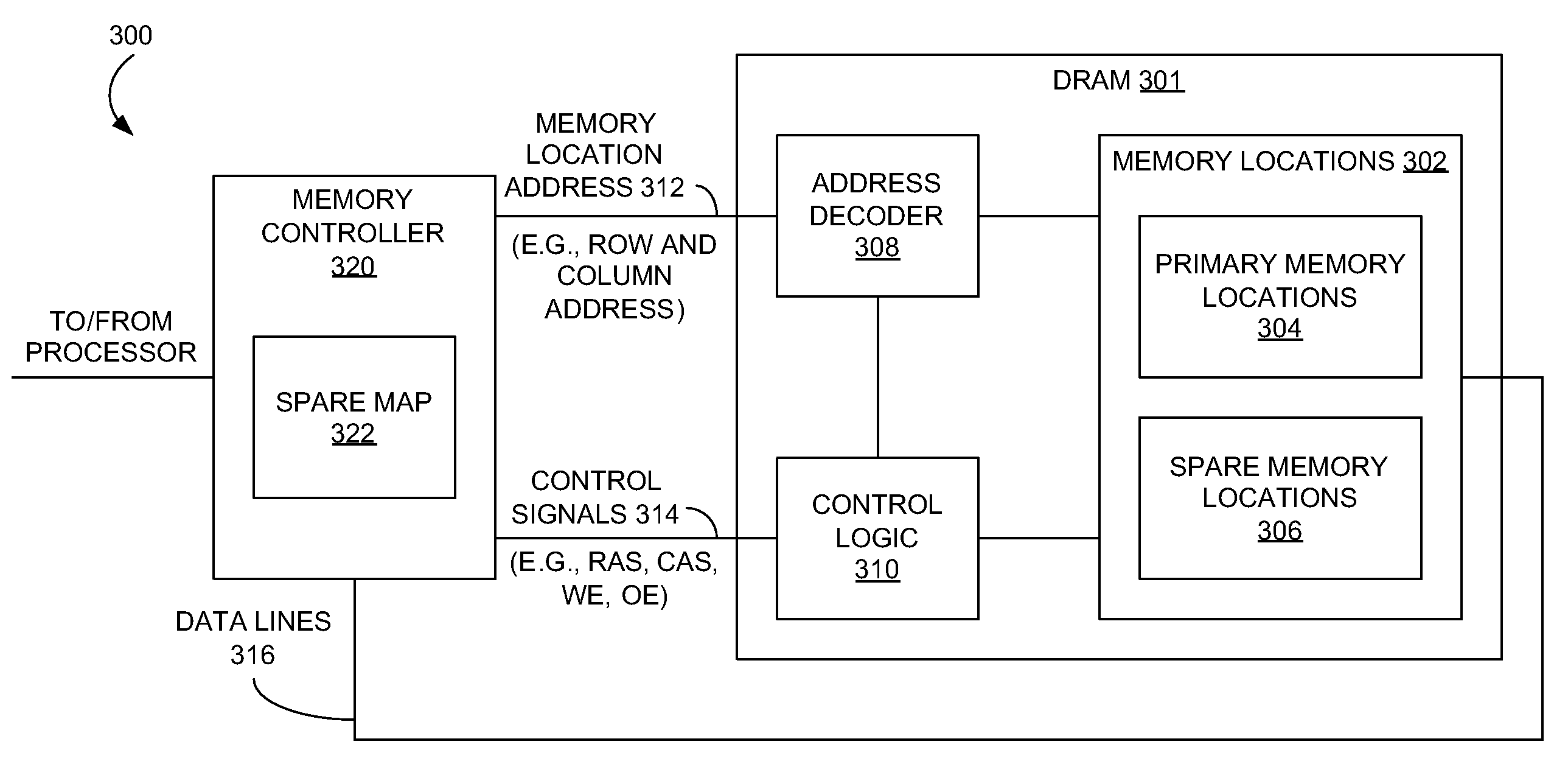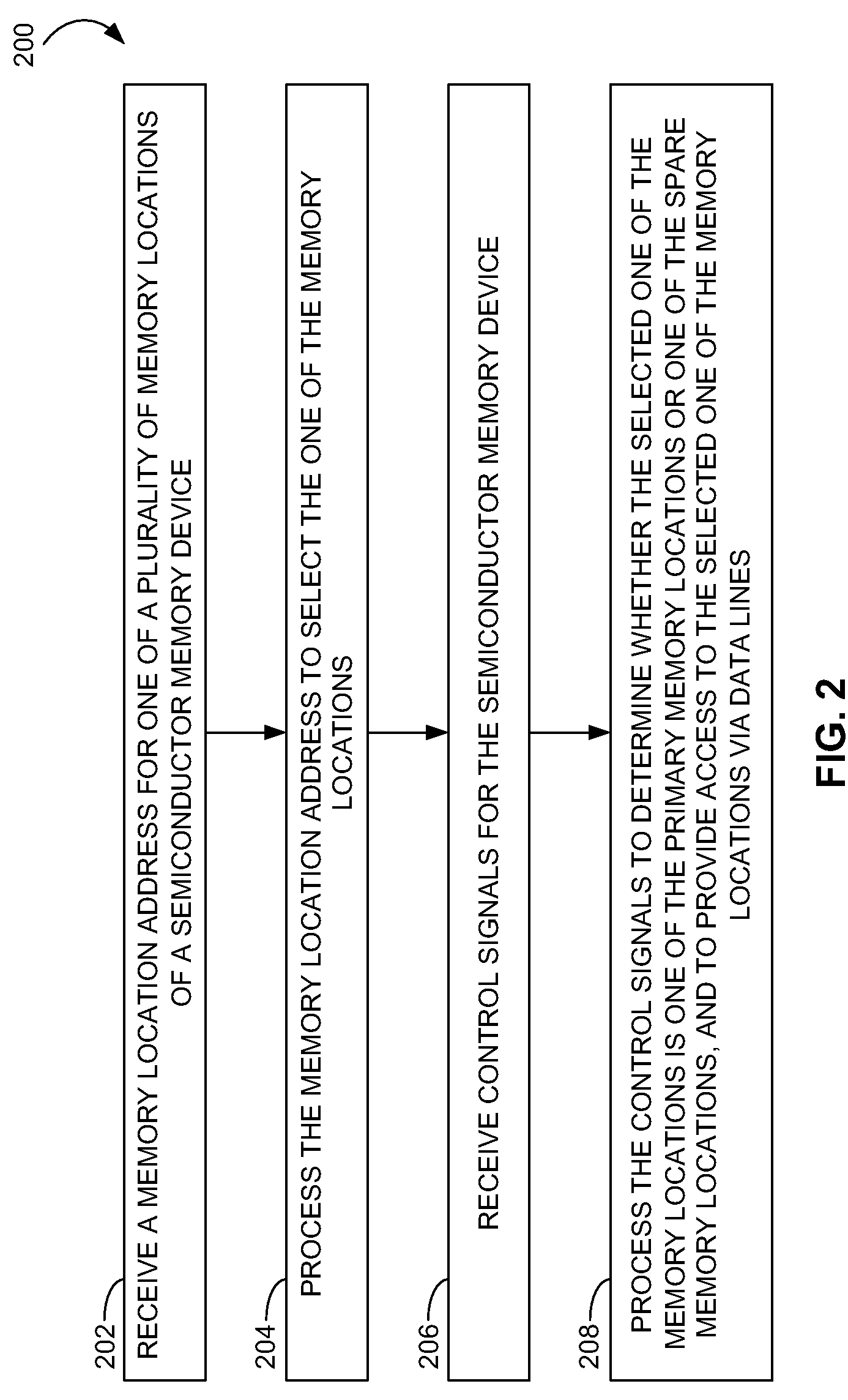Semiconductor memory device and system providing spare memory locations
a memory device and semiconductor technology, applied in the field of semiconductor memory devices and, can solve the problems of memory data error rate increase, memory defects within individual memory devices, and memory errors that may still be encountered during normal use of devices,
- Summary
- Abstract
- Description
- Claims
- Application Information
AI Technical Summary
Benefits of technology
Problems solved by technology
Method used
Image
Examples
Embodiment Construction
[0012]FIG. 1 provides a block diagram of one embodiment of the invention: a semiconductor memory device 100 that includes a plurality of memory locations 102. More specifically, the memory locations 102 include a plurality of primary memory locations 104 and a plurality of spare memory locations 106. Included in the device 100 is an address decoder 108 configured to receive a memory location address 112 and process the address 112 to select one of the memory locations 102. Also provided is control logic 110 configured to receive control signals 114 and process the control signals 114 to determine whether the selected one of the memory locations 102 is one of the primary memory locations 104 or one of the spare memory locations 106. The control logic 110 is also configured to provide access to the selected one of the memory locations 102 via data lines 116. In another embodiment, a memory controller (not shown in FIG. 1) may be employed to generate the memory location address 112 and...
PUM
 Login to View More
Login to View More Abstract
Description
Claims
Application Information
 Login to View More
Login to View More - R&D
- Intellectual Property
- Life Sciences
- Materials
- Tech Scout
- Unparalleled Data Quality
- Higher Quality Content
- 60% Fewer Hallucinations
Browse by: Latest US Patents, China's latest patents, Technical Efficacy Thesaurus, Application Domain, Technology Topic, Popular Technical Reports.
© 2025 PatSnap. All rights reserved.Legal|Privacy policy|Modern Slavery Act Transparency Statement|Sitemap|About US| Contact US: help@patsnap.com



